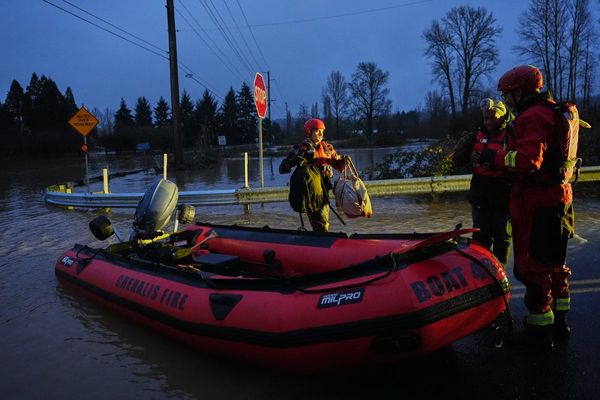
Every morning at dawn, a dozen volunteers scour the streets of Toronto picking up small birds. Some days they will find hundreds of them, most already dead or dying. A few they are able to save. Live birds are put in brown paper bags and driven to wildlife recovery centres, while dead birds are put in a large freezer. If no one picks them up, their carcasses are swept up by street cleaners.
“One of my first days was really horrific,” says Sohail Desai, a volunteer with the charity Fatal Light Awareness Program (Flap) Canada, which has about 135 people patrolling the streets across Toronto. Desai was walking close to his house in the North York area in Toronto when a flock of golden-crowned kinglets flew into a 15-storey glass building.
“Everywhere we turned there were birds hitting all over the place. It was quite traumatic. It’s not just finding them on the ground, but actually seeing them hit, and that feeling of powerlessness.”
Desai ended up taking 80 birds to the wildlife centre that day – they could not all fit in his car so he did multiple runs. Another 80 were dead, bound for the freezer. “Some of them died in my hands,” he says.
Most countries do not have firm data on how many birds die flying into windows, but it is likely to be extensive in any city on bird migration routes with glass-fronted buildings. In the US, it is estimated that more than a billion birds die each year this way.
About 60% of birds that collide with windows are killed. Sometimes, a single building can be deadly: more than 1,000 birds died on a single day in October 2023 from colliding with the McCormick Place skyscraper in Chicago.
In North America, spring migration runs from late March until early June, and autumn migration from late August until the end of October. During this period Desai goes on patrol seven days a week, for up to four hours every morning, starting at sunrise. He has saved hundreds of birds, he says, and possibly in excess of 1,000. He also has a small chest freezer full of dead birds at the end of every year – just from his area.
“If I didn’t go, no one else would go to that area. I couldn’t imagine leaving injured birds there without anyone helping,” says Desai. On a busy day he can save up to 25 birds. Desai does not usually find out what happens to them after they go to the wildlife centre.
“I find, for my mental health, I don’t want to follow up too much,” he says. “I just focus on the next birds that need help.”
“Seeing ones that don’t hit brings me joy,” says Desai, who says he has become more of a birder now and goes out to photograph birds.
When Yuko Miki heard about Flap’s work she thought it was something she would do later in life. “I’m not a morning person, so I was like, maybe I’ll do it once I retire,” she says.
But then Covid hit in 2020 and she had a lot of time on her hands. Miki wakes up at 6am and starts her patrol at 6.30am around downtown Toronto and the financial district. “Now I’m just a morning person during migration time,” she says.
Her husband initially joined her because he was worried about her wandering around alone in the dark, and now they go together every morning. “It’s mentally draining, so having another person really helps. We can chat, give a hug to each other … It never gets easier,” she says.
On a busy day Miki picks up 20 or 30 birds, a few of which are still alive. “Some of the birds that I pick up I would be over the moon to see in the wild setting. It is so rare that you get to see them, and then here I am just picking their body off the floor of downtown Toronto.”
At the end of the season, the 4,000 dead birds collected by Flap volunteers are laid out in a display showing the scale of the damage. Volunteers can record their findings on the Global Bird Collision Mapper. So far, more than 100,000 birds have been reported as colliding with a window – 73,000 of which died.
“Since I joined Flap, I never see the city in the same way as before,” says Miki. It is not necessarily skyscrapers that do the damage – it is regular homes too.
The organisation campaigns for bird-friendly windows, which have patterns of small dots, squares or lines, which birds can see. Closing blinds or curtains at night, and turning building lights off, can also help.
“One of the reasons I stay and want to continue is that I have met wonderful people who I would never meet otherwise,” says Miki. When she is on her morning patrol with her bags and nets, people often ask her what she is doing. “Any opportunity I have to talk to people, I will,” she says.
Now, security and cleaning staff who work early will sometimes call and say they have seen a bird, asking if she can help. “Sometimes I get calls at 11pm, with someone saying, ‘we have a live bird, is there any way you can come?’ And I’ll say, of course I can.”
Find more age of extinction coverage here, and follow the biodiversity reporters Phoebe Weston and Patrick Greenfield in the Guardian app for more nature coverage







